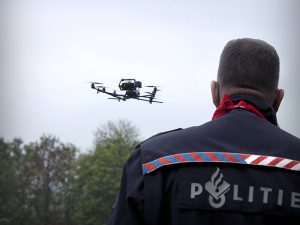Robot planes and helicopters are undergoing faster development in the 21st century than manned aircraft did in the 20th century. NLR is keeping a close eye on these developments.
Having started out as reconnaissance planes, unmanned aircraft are now being designed for a much broader range of specialised objectives, such as attacking ground targets, moving cargo or even intercepting other robot planes. And unmanned helicopters have now also appeared on the scene.
Miniaturisation of these Unmanned Aerial Systems (UAS) is a trend that has recently accelerated and won increasing civil and military significance. Established in 2010, NLR’s UAS lab has been closely monitoring developments and initiating its own innovations in this field. NLR is also addressing the almost complete lack of regulation of UAS operations and has contributed to further development by researching operational control issues and resolving navigational problems by applying a new type of camera borrowed from the games industry.
This type of flying robot, the mini-UAS, is only a few dozen centimetres long and sometimes even smaller. Designs range from normal planes to helicopters with up to eight rotors and ducted fans that can take off vertically. Analysts predict that these unmanned planes will eventually find a broad area of application, e.g. not just for military deployment but also for inspecting pipelines, monitoring objects or as a cartographical aid. There are still a few hurdles to overcome before all these unmanned machines can effectively be deployed for such purposes. At present, they depend largely on GPS for navigation and are vulnerable to strong winds. They still need a more proficient means of propulsion and it is vital to reduce the size of the sensors they carry. The Dutch armed forces, the Dutch national police agency KLPD and the national land registry ‘het Kadaster’ are already benefiting from the expertise developed by NLR.

